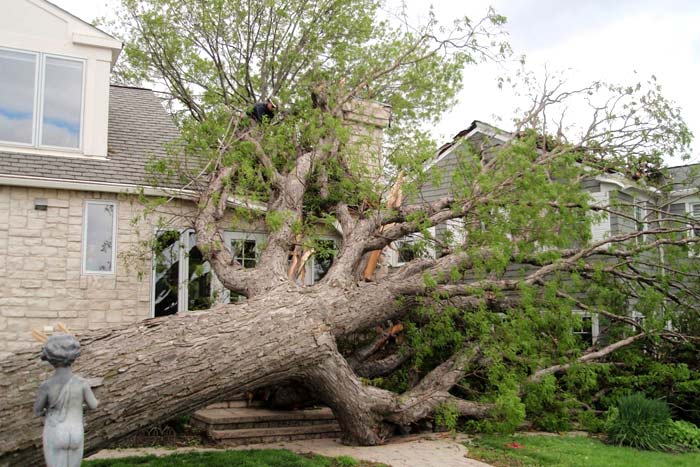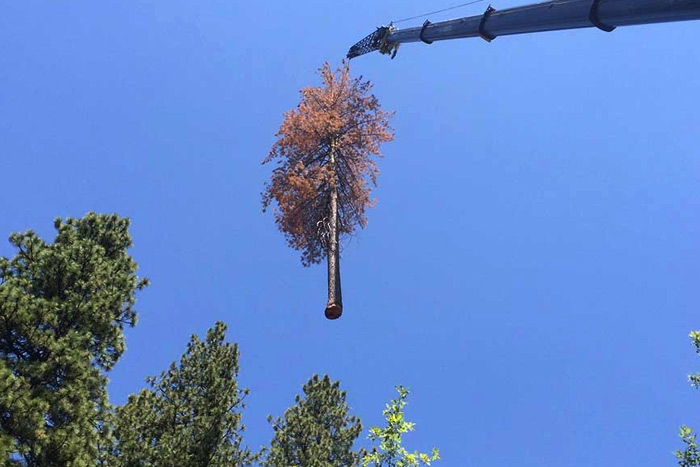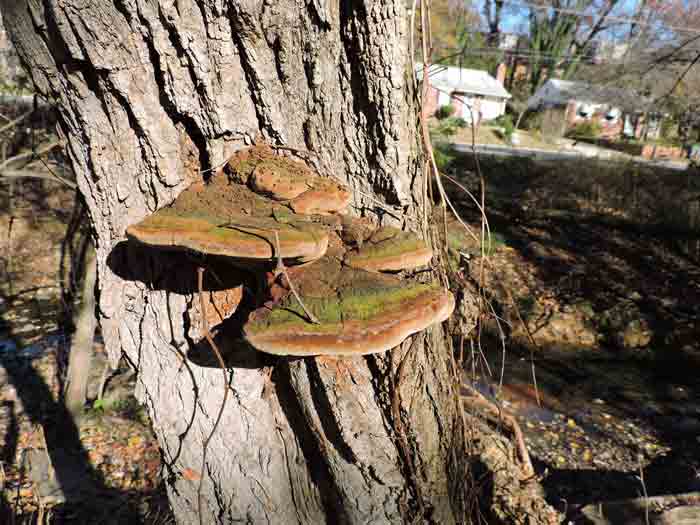Is a tree endangering your home, family, or property? A leaning, diseased, or rotting tree poses a risk to your property and should be addressed immediately. At Go Tree Quotes, we focus on high-risk tree removal, offering fast, reliable, and safe services nationwide. Whether the tree is a risk to your property or simply needs to be removed for health reasons, our team of certified arborists has the expertise to handle the job.

What we cover
ToggleWhy Should You Choose Our Professional Tree Removal Services?
- Certified Arborists: Our arborists are trained and certified, so you always get expert care.
- Fully Insured Services: With full insurance, you’re covered from start to finish.
- Fast Response Times: Emergencies happen, and we’re here 24/7 to take care of dangerous trees right away.
- High-Quality Equipment: We use the best gear to safely and efficiently remove dangerous trees.
- Affordable Rates: We provide competitive pricing without compromising the quality of our service.
How We Approach Hazardous Tree Removal
- Assessment: First, we check the tree and its surroundings to figure out the safest way to take it down.
- Plan of Action: After assessing the tree, we create a plan that takes everything into account, like nearby structures and the tree’s stability.
- Removal: We safely remove hazardous trees with top-notch tools, making sure we cause as little disruption as possible.
- Cleanup: After the removal, we thoroughly clean up the area, removing all debris and leaving your property in top condition.

Other Tree Services That We Offer
At Go Tree Quotes, we don’t just remove hazardous trees – we offer a full range of services to take care of all your tree needs. Here’s a look at some of the other services we offer:
- Tree Removal: We safely remove trees of all sizes, ensuring minimal disruption to your property.
- Tree Trimming and Pruning: Regular pruning is essential for tree health. Our experts will trim your trees to improve their appearance and safety.
- Stump Grinding: After a tree is removed, we grind the stump down to ground level, leaving your yard looking clean and tidy.
- Tree Cabling and Bracing: For trees that are leaning or have weak limbs, we provide cabling and bracing services to stabilize them and prevent potential hazards.
- Tree Health Inspections: Our arborists can assess the health of your trees and provide a treatment plan if necessary, including disease management and pest control.
- Emergency Tree Services: Storms can cause trees to fall or become unstable. We offer emergency tree removal services to address immediate dangers to your property.
- Arborist Reports: If you need an official report for insurance claims or local council requirements, we provide thorough and accurate arborist reports.
Whatever your tree care needs, Go Tree Quotes is your trusted partner in the tree service industry.
Common Signs of Hazardous Trees
A tree might need removal if you notice any of these signs:
- Leaning or Tilted Trunk
- Cracks or Split Bark
- Dead or Dying Branches
- Fungal Growth at the Base or on the Trunk
- Excessive Leaning or Root Exposure
- Hollow Trunk or Branches
- Unusual or Discolored Leaves
- Visible Pest Infestation
If your tree displays any of these signs, it’s important to act fast. A hazardous tree can be unpredictable and cause significant damage.

How Much Does Hazardous Tree Removal Cost?
| Service | Low | High |
|---|---|---|
| Hazardous tree removal cost | $450 | $3,900 |
| Hazardous tree removal per hour cost | $120 p/hr | $350 p/hr |
| Average cost of Hazardous tree removal | $1,129 | |
Trees under 30 feet typically cost between $500 and $1,000, while trees over 60 feet can range from $1,200 to $3,000 or more.
The cost of removing dangerous trees is affected by the following factors:
- Tree size: Larger trees are more expensive to remove. The removal of large trees, especially in hard-to-reach areas, can significantly increase the cost.
- Location: Trees located near power lines, structures, or hard-to-reach areas may increase the price.
- Condition: If the tree is unstable or diseased, special precautions may be needed, which can affect the price.
- Additional Services: If stump grinding or tree trimming is required, it will add to the cost.
For a more accurate estimate, contact us today for a free quote.
FAQ's
Hazard tree removal is the process of safely removing trees that pose a threat to property or safety, especially those damaged or fallen due to natural disasters. This includes trees that are leaning, diseased, or showing signs of structural weakness.
Look for signs such as large cracks in the trunk, dead branches, leaning, or exposed roots. If you notice any of these issues, it’s important to contact a certified arborist for an assessment.
In some cases, hazardous tree removals may be covered by homeowners insurance, especially if the tree falls during a storm or causes damage. Check with your insurance provider to see if your policy covers this type of work.
The time needed for tree removal depends on the tree’s size, location, and condition. Smaller trees can be removed in a few hours, while a large tree may take longer. We provide an estimated time frame during the initial assessment.
Yes, all of our arborists are fully insured, ensuring safety for both you and our team during the removal process.
Yes, we offer 24/7 emergency tree removal services. If you have a tree that’s causing an immediate risk, don’t hesitate to reach out for fast, reliable service.














